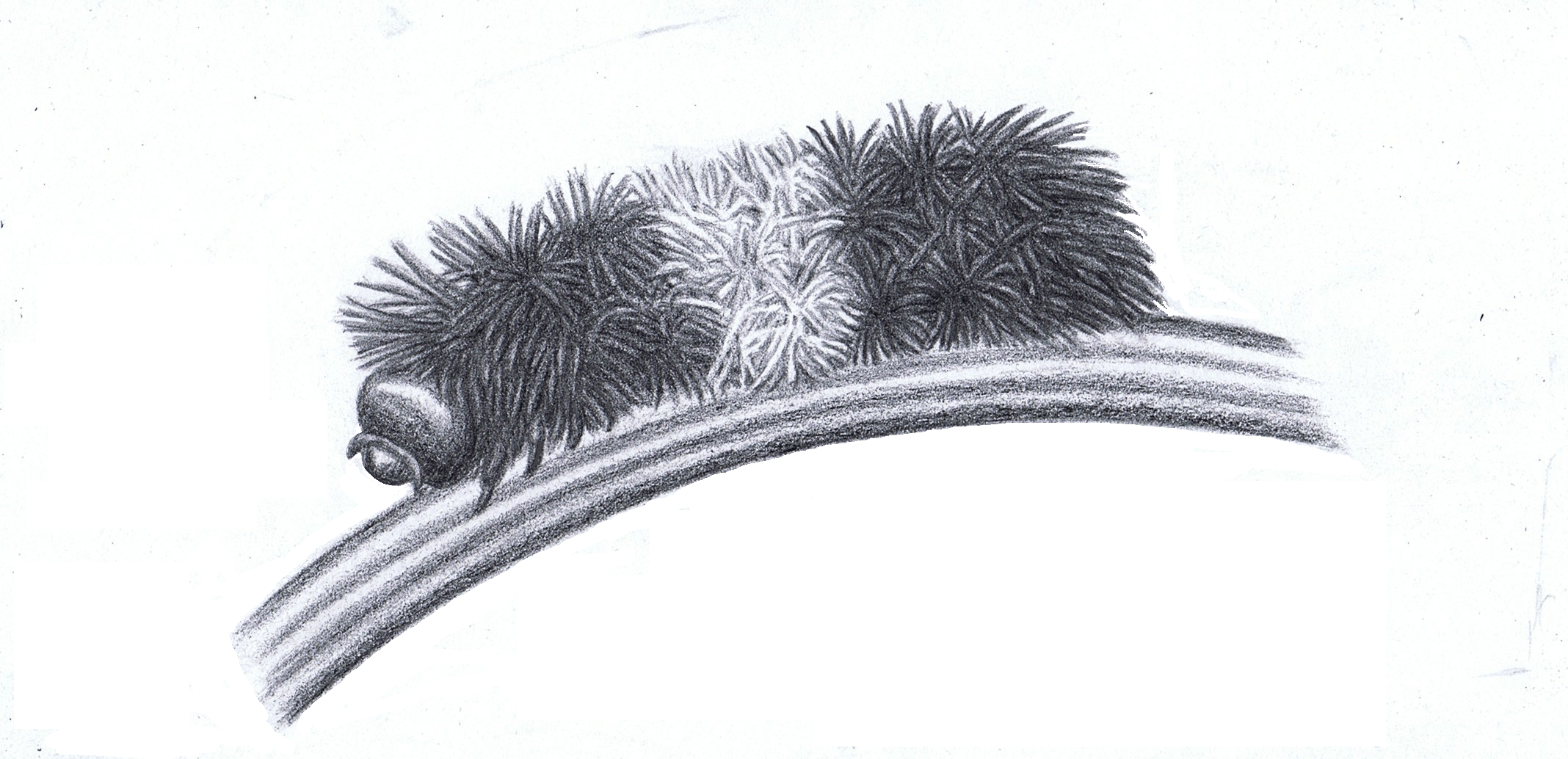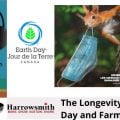Woolly bear caterpillars are synonymous with fall. Just before the first frost, they are seen hurriedly inching their way across the road in search of overwintering sites like log cavities or leaf litter. Known as the hedgehog caterpillar, woolly worm, fuzzy bear and fuzzy worm, the caterpillars are predictable at playing possum. Curling into tight balls, their toothbrush-like bristles encourage touching, but they can actually cause skin irritation (which I’ve never experienced).
One of my elementary school teachers is fondly remembered for introducing our young minds to the likes of the Great Woolly Bear Caterpillar Race. The championships were held on the tarmac of Mt. Pleasant Public School and there were trophies to be won! Somehow, most of our Grade 2 class was able to find a contestant to participate in the race. We pulled the woolly bears out of our jean pockets, lunch pails and envelopes on the big day. Some of us brought our racers to school in Mason jars with a handful of grass in the jar’s bottom in case the caterpillar needed an energy boost.
Miss Dutton wasn’t alone in her championing of the woolly worms, first identified by James Edward Smith in 1797. There is a landmark festival held in Vermillion, Ohio, featuring a parade and woolly worm costume contest for humans and pets. And every October since 1977, a crowd has gathered in Banner Elk, North Carolina, for the annual caterpillar race and alleged winter forecast prediction. Because the woolly knows best!
Folklore has long revolved around the 13 distinct segments of the caterpillar. The amount of black on each end obviously indicated the length and bitterness of the approaching winter. An abundance of black suggested a more severe winter while a wider, rusty mid-riff held promise for a mild winter.
Come spring, regardless of what the rusty and black segments have dictated, the re-emerged woolly bear feeds briefly and then sets about creating a rather industrious oblong cocoon. If you find a taupe-coloured cocoon that looks like an oversized cotton swab, it’s probably an Isabella tiger moth in the making. There are two generations, or broods, that emerge in May and August. The late-summer brood is forced to endure the winter extremes (a cryoprotectant in the caterpillar tissue allows them to essentially freeze solid and thaw) before transforming and taking flight.
Tiger moths (and their larvae-form woolly bear selves) are abundant in the southern third of Canada, northern Mexico and the United States. The mustard yellow and orange forewings with black dots are easy to spot once you know what you’re looking for. The males display more of an orange tint, while females appear rosier. The hindwings of both sexes are pinker with grey dots and only visible when the moth’s wings are spread and flat.

The woolly bear may win resiliency awards, but the Arctic woolly bear, found in Greenland and the Canadian High Arctic, takes home the hardware. This species can experience a full caterpillar life cycle of 15 years. With four years between moults, the Arctic woolly remains in larval stage for most of its life.
Thanks to diapause, a mechanism that delays development, the caterpillar can adopt a dormant state and endure temperatures of –70°C (–94°F). This same mechanism allows many insects to survive droughts, temperature extremes and reduced food supply.
And, I assure you, we’re not trying to pull the woolly over your eyes! It would be great to have a little built-in cryoprotectant for this upcoming winter, wouldn’t it?
Jules Torti’s work has been published in The Vancouver Sun, The Globe & Mail, travelife, Canadian Running and Coast Mountain Culture. With experiences as a canoe outtripper, outdoor educator, colouring book illustrator and freelancer, she is thrilled to be able to curate, write and read about the very best things in life.














